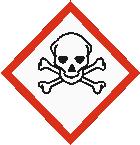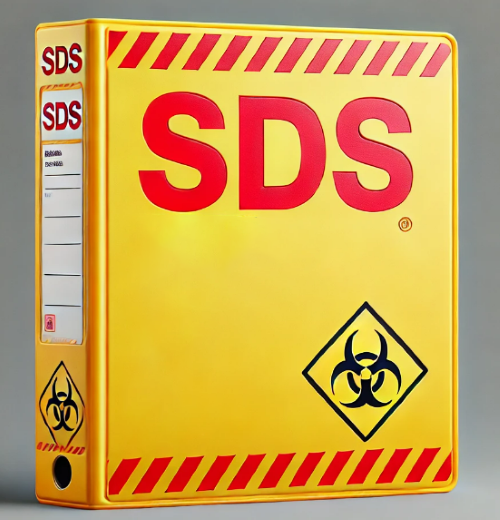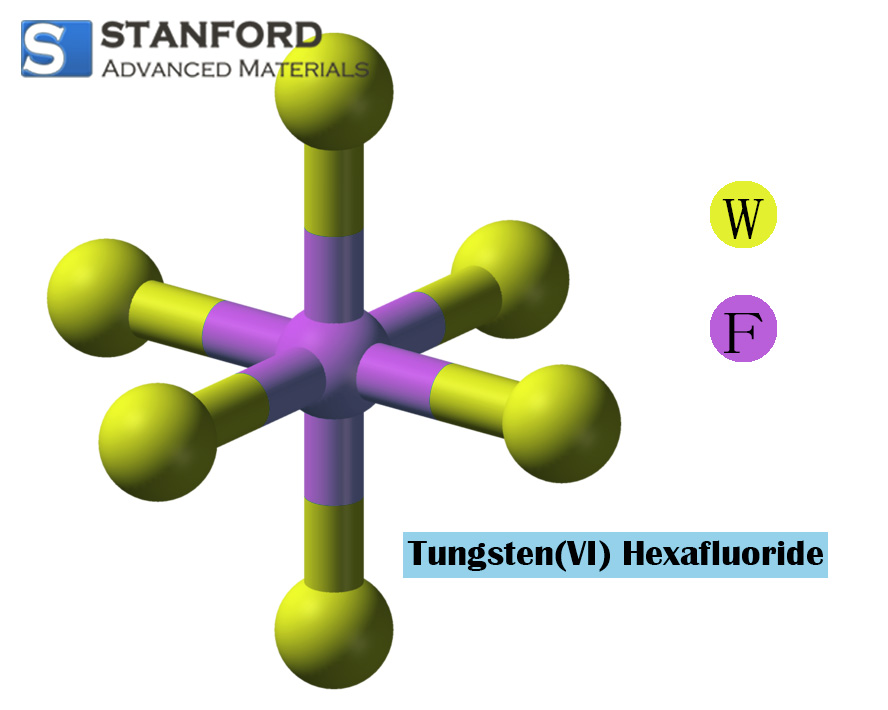Material Safety Data Sheet Of Erbium (III) Fluoride
1. PRODUCT AND COMPANY IDENTIFICATION
1.1 Product Designations
Product name : Erbium(III)-Fluoride
Product number: 432156
Brand: Aldrich
CAS No.: 13760-83-3
1.2 Identified Uses of the Substance or Mixture and Uses to be Avoided
Identified uses: Laboratory chemicals, manufacture of substances
1.3 Details of the Supplier of the Safety Data Sheet
Company: Stanford Advanced Materials
72 Fairbanks Suite 100, Irvine CA 92618
Telephone: +(949) 407 8904
Fax: +(949) 812 6690
2. HAZARD IDENTIFICATION
2.1 Classification of the Substance or Mixture
GHS classification in accordance with 29 CFR 1910 (OSHA HCS)
Acute toxicity, oral (Category 3), H301
Acute toxicity, inhalation (Category 3), H331
Acute toxicity, dermal (Category 3), H311
The full text of the H‐phrases mentioned in this section is provided in Section 16.
2.2 GHS Labelling Elements, Including Precautionary Statements
Pictogram 
Signal word: Danger
Hazard statement(s):
H301 + H311 + H331: Toxic if swallowed, on skin contact or if inhaled
Precautionary statement(s):
P261: Avoid breathing dust/fume/gas/aerosol.
P264: Wash skin thoroughly after handling.
P270: Do not eat, drink or smoke when handling this product.
P271: Use only in well-ventilated areas or outdoors.
P280: Wear protective gloves/protective clothing.
P301 + P310: IF SWALLOWED: Immediately call a Poison Information Centre or a physician.
P302 + P352: IF ON SKIN: Wash immediately with plenty of water and soap.
P304 + P340: IF INHALED: Remove the person to fresh air and keep in a position to assist breathing.
P312: If unwell, call a Poison Information Centre or a physician.
P322: Specific precautions (see additional first aid instructions on this label).
P330: Rinse mouth.
P361: Remove contaminated clothing immediately.
P363: Wash contaminated clothing before reuse.
P403 + P233: Store in a well-ventilated place. Keep container tightly closed.
P405: Keep under lock and key.
P501: Dispose of contents/ container to a recognised waste disposal facility.
2.3 Hazards Not Otherwise Classified (HNOC) or not Covered by the GHS
Reacts with acids to produce highly toxic gases.
3. COMPOSITION/INGREDIENT INFORMATION
3.1 Ingredients
Formula: ErF3
Molecular weight: 224.25 g/mol
CAS No.: 13760-83-3
EC No.: 237-356-3
Hazardous constituents
| Constituent | Classification | Concentration |
| Erbium trifluoride | Acute Tox. 3; H301 + H311 + H331 | ≤ 100 % |
The full text of the H‐phrases mentioned in this section is provided in Section 16.
4. FIRST AID MEASURES
4.1 Description of First Aid Measures
General Advice
Seek a physician. Present this Safety Data Sheet to the attending doctor and leave the hazardous area.
If Inhaled
If inhaled, relocate the person to fresh air. If breathing ceases, perform artificial respiration. Seek medical attention.
If on Skin
Wash with soap and plenty of water. Seek hospital treatment and consult a physician.
If in Eyes
Rinse eyes with water as a precaution.
If Swallowed
Do not administer anything to an unconscious person. Rinse mouth with water. Seek medical advice.
4.2 Main Acute and Delayed Symptoms and Effects
The principal known symptoms and effects are described in the classification (see Section 2.2) and/or in Section 11.
4.3 Indications for Immediate Medical or Specialist Treatment
No data available.
5. FIRE FIGHTING MEASURES
5.1 Suitable Extinguishing Media
Dry powder
5.2 Specific Hazards Arising from the Substance or Mixture
Hydrofluoric acid, erbium oxides
5.3 Advice for Fire Fighting
During firefighting, wear a self-contained breathing apparatus if required.
5.4 Further Information
No data available.
6. ACCIDENTAL RELEASE MEASURES
6.1 Personal Precautions, Protective Equipment and Emergency Procedures
Wear respiratory protection. Prevent dust formation. Avoid inhalation of fumes, aerosols or gases. Ensure adequate ventilation. Evacuate persons to a safe area. Avoid dust inhalation.
For personal protection refer to Section 8.
6.2 Environmental Precautions
Prevent further leakage or spillage where safely possible. Do not allow the product to enter the sewage system.
6.3 Methods and Materials for Containment and Cleaning Up
Collect and dispose of without generating dust. Sweep and scoop up. Do not flush with water. Store in appropriate closed containers for disposal.
6.4 See also
For disposal, refer to Section 13.
7. HANDLING AND STORAGE
7.1 Precautions for Safe Handling
Avoid contact with skin and eyes. Prevent the formation of dust and aerosols. Ensure adequate extraction in dust generating areas. See Section 2.2 for further precautions.
7.2 Conditions for Safe Storage, Including Incompatibilities
Store in a tightly closed container in a dry and well-ventilated area.
The product must not come into contact with water during storage. Do not store near acids.
Store in a dry place.
7.3 Specific End Uses
Other than the uses cited in Section 1.2, no further specific applications are stipulated.
8. EXPOSURE CONTROLS/PERSONAL PROTECTIVE EQUIPMENT
8.1 Exposure Limit Parameters
Constituents with Workplace Control Parameters
| Constituent | CAS No. | Value | Control Parameter | Basis |
| Erbium trifluoride | 13760-83-3 | TWA | 2.500000 mg/m³ | USA. Workplace Air Contaminants Limits (OSHA) – Table Z-1 |
| Remarks | CAS number varies with the compound | |||
| TWA | 2.500000 mg/m³ | USA. Workplace Air Contaminants Limits (OSHA) – Table Z-2 | ||
| Z37.28-1969 | ||||
| TWA | 2.500000 mg/m³ | USA. ACGIH Threshold Limit Values (TLV) | ||
| Skeletal damage, fluorosis, substances for which a Biological Exposure Index exists (see BEI®) or varies in not being classified as carcinogenic to humans | ||||
| TWA | 2.500000 mg/m³ | USA. ACGIH Threshold Limit Values (TLV) | ||
| Skeletal damage, fluorosis, substances for which a Biological Exposure Index exists (see BEI®) or varies in not being classified as carcinogenic to humans | ||||
| TWA | 2.5 mg/m³ | USA. Workplace Air Contaminants Limits (OSHA) – Table Z-1 | ||
| CAS number varies with the compound | ||||
| TWA | 2.5 mg/m³ | USA. ACGIH Threshold Limit Values (TLV) | ||
| Skeletal damage, fluorosis, substances for which a Biological Exposure Index exists (see BEI®) or varies in not being classified as carcinogenic to humans | ||||
Biological Limit Values for Occupational Exposure
| Constituent | CAS No. | Parameter | Value | Biological Sample | Basis |
| Erbium trifluoride | 13760-83-3 | Fluoride | 3.0000 mg/g | Urine | ACGIH – Biological Exposure Indices (BEI) |
| Remarks | Before shift (16 hours after termination of exposure) | ||||
| Fluoride | 10.0000 mg/g | Urine | ACGIH – Biological Exposure Indices (BEI) | ||
| End of shift (as soon as possible after termination of exposure) | |||||
| Fluoride | 2 mg/l | Urine | ACGIH – Biological Exposure Indices (BEI) | ||
| Before shift (16 hours after termination of exposure) | |||||
| Fluoride | 3 mg/l | Urine | ACGIH – Biological Exposure Indices (BEI) | ||
| End of shift (as soon as possible after termination of exposure) | |||||
8.2 Exposure Control and Monitoring
Appropriate Engineering Controls
Avoid contact with skin, eyes and clothing. Consequently, wash hands before breaks and immediately after handling the product.
Personal Protective Equipment
Eye/Face Protection
Use eye/face protection that complies with national standards such as NIOSH (USA) or EN 166 (EU).
Skin Protection
Handle with gloves. Inspect gloves prior to use. When removing gloves, use the correct technique (avoid touching the exterior) to prevent skin contact with the product. Dispose of contaminated gloves in accordance with applicable legislation and sound laboratory practice. Wash and dry hands.
Full Protection
Material: Nitrile rubber
Minimum thickness: 0.11 mm
Breakthrough time: 480 min
Tested material: Dermatril® (KCL 740 / Aldrich Z677272, Size M)
Protection against splashes:
Material: Nitrile rubber
Minimum thickness: 0.11 mm
Breakthrough time: 480 min
Tested material: Dermatril® (KCL 740 / Aldrich Z677272, Size M)
Data source: KCL GmbH, D-36124 Eichenzell, Telephone +49 (0)6659 87300, E-Mail sales@kcl.de, Test method: EN374
If used in solution or in a mixture with other substances and under conditions deviating from EN 374, consult the supplier of the CE‐approved gloves. This recommendation is advisory and must be evaluated by an occupational hygienist and a safety officer familiar with the specific intended use by our customers. It does not constitute certification for any particular use scenario.
Body Protection
Wear a full-body chemical protective suit. The type of protective equipment must be selected based on the concentration and quantity of the hazardous substance at the workplace.
Respiratory Protection
If the risk assessment indicates that an air-purifying respirator is appropriate, use a full-face particulate respirator of type N100 (US) or type P3 (EN 143) as a supplement to engineering controls. If the respirator is the sole protective measure, use a full-face supplied-air respirator. Use respirators and components that have been tested and certified in accordance with applicable standards such as NIOSH (USA) or CEN (EU).
Environmental Exposure Control
Prevent further leakage or spillage where safely possible. Do not allow the product to enter the sewage system.
9. PHYSICO-CHEMICAL PROPERTIES
9.1 Basic Physico-Chemical Properties
a) Appearance: Powder
b) Odour: No data available
c) Odour threshold: No data available
d) pH value: No data available
e) Melting/Freezing point: No data available
f) Initial boiling point and boiling range: No data available
g) Flash point: Not applicable
h) Evaporation rate: No data available
i) Flammability (solid, gaseous): No data available
j) Upper/lower flammable or explosive limits: No data available
k) Vapour pressure: No data available
l) Vapour density: No data available
m) Relative density: No data available
n) Water solubility: No data available
o) Partition coefficient: n-Octanol/Water: No data available
p) Autoignition temperature: No data available
q) Decomposition temperature: No data available
r) Viscosity: No data available
s) Explosive properties: No data available
t) Fire propagation properties: No data available
9.2 Other Safety Information
No data available
10. STABILITY AND REACTIVITY
10.1 Reactivity
No data available
10.2 Chemical Stability
Stable under the recommended storage conditions.
10.3 Possibility of Hazardous Reactions
No data available
10.4 Conditions to Avoid
Avoid moisture.
10.5 Incompatible Materials
Strong reducing agents
10.6 Hazardous Decomposition Products
Other decomposition products – No data available
In the event of a fire: refer to Section 5
11. TOXICOLOGICAL INFORMATION
11.1 Information on Toxicological Effects
Acute Toxicity
No data available
Corrosive/Irritant Effects on the Skin
No data available
Serious Eye Damage/Eye Irritation
No data available
Sensitisation of the Respiratory System or Skin
No data available
Germ Cell Mutagenicity
No data available
Carcinogenicity
IARC: 3 – Group 3: Not classifiable regarding its carcinogenicity to humans (Erbium trifluoride)
NTP: No constituent present in amounts ≥ 0.1 % has been identified by NTP as a known or potential carcinogen.
OSHA: No constituent present in amounts ≥ 0.1 % is classified by OSHA as carcinogenic or potentially carcinogenic.
Reproductive Toxicity
No data available
Specific Target Organ Toxicity – Single Exposure
No data available
Specific Target Organ Toxicity – Repeated Exposure
No data available
Aspiration Hazard
No data available
Additional Information
RTECS: Not available
Salivation, nausea, abdominal pain, vomiting, fever, rapid breathing, reduction of serum calcium levels by fluoride ions leading to potential fatal hypocalcaemia, burning sensation, coughing, wheezing, laryngitis, shortness of breath, headaches
12. ECOLOGICAL INFORMATION
12.1 Toxicity
No data available
12.2 Persistence and Degradability
No data available
12.3 Bioaccumulation Potential
No data available
12.4 Mobility in Soil
No data available
12.5 Results of the PBT and vPvB Assessment
PBT/vPvB assessment not available, as a substance safety assessment is not required or has not been conducted
12.6 Other Adverse Effects
No data available
13. DISPOSAL CONSIDERATIONS
13.1 Waste Disposal Methods
Product
Offer excess and non-recyclable solutions to a licensed disposal company. Consequently, consult an authorised professional disposal service for the disposal of this material. Dissolve or mix the material with a combustible solvent and incinerate it in a chemical incinerator equipped with a secondary combustion chamber and a scrubber.
Contaminated Packaging
Dispose of as unused product.
14. TRANSPORT INFORMATION
DOT (US)
UN Number: 3288 Class: 6.1 Packing Group: III Proper Shipping Name: Toxic solid, inorganic, n.o.s. (Erbium trifluoride)
Not a toxic inhalation hazard: No
IMDG
UN Number: 3288 Class: 6.1 Packing Group: III EMS No.: F-A, S-A Proper Shipping Name: TOXIC SOLID, INORGANIC, N.O.S. (Erbium trifluoride)
IATA
UN Number: 3288 Class: 6.1 Packing Group: III Proper Shipping Description: Toxic solid, inorganic, n.o.s. (Erbium trifluoride)
15. REGULATORY INFORMATION SARA
302 Constituents
None of the chemicals contained in this material are subject to the SARA Title III, Section 302 reporting requirements.
SARA 313 Constituents
This material does not contain chemical components with known CAS numbers that exceed the de minimis thresholds established by SARA Title III, Section 313.
SARA 311/312 Hazards
Acute health hazard
Massachusetts Right To Know Constituents
No components are subject to the Massachusetts Right to Know Act.
Pennsylvania Right To Know Constituents
Erbium trifluoride CAS No. 13760-83-3 Revision Date 01/06/2008
New Jersey Right To Know Constituents
Erbium trifluoride CAS No. 13760-83-3 Revision Date 01/06/2008
California Prop. 65 Constituents
This product does not contain any chemicals known to the State of California to cause cancer, birth defects or other reproductive harm.
16. OTHER INFORMATION
Full text of the H‐phrases referenced in Sections 2 and 3.
Acute Toxicity
H301: Toxic if swallowed.
H301 + H311 + H331: Toxic if swallowed, on skin contact or if inhaled.
H311: Toxic on skin contact.
HMIS Rating
Health hazard: 2
Chronic health hazard:
Flammability: 0
Physical hazard: 0
NFPA Rating
Health hazard: 2
Fire hazard: 0
Reactivity hazard: 0

 Bars
Bars
 Beads & Spheres
Beads & Spheres
 Bolts & Nuts
Bolts & Nuts
 Crucibles
Crucibles
 Discs
Discs
 Fibers & Fabrics
Fibers & Fabrics
 Films
Films
 Flake
Flake
 Foams
Foams
 Foil
Foil
 Granules
Granules
 Honeycombs
Honeycombs
 Ink
Ink
 Laminate
Laminate
 Lumps
Lumps
 Meshes
Meshes
 Metallised Film
Metallised Film
 Plate
Plate
 Powders
Powders
 Rod
Rod
 Sheets
Sheets
 Single Crystals
Single Crystals
 Sputtering Target
Sputtering Target
 Tubes
Tubes
 Washer
Washer
 Wires
Wires
 Converters & Calculators
Converters & Calculators
 Write for Us
Write for Us
 Chin Trento
Chin Trento


